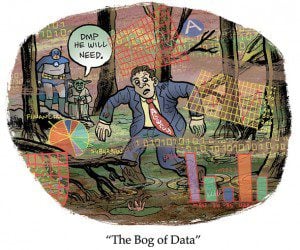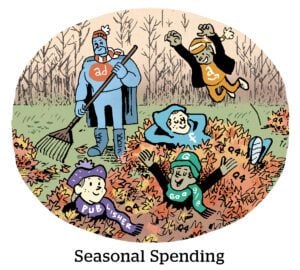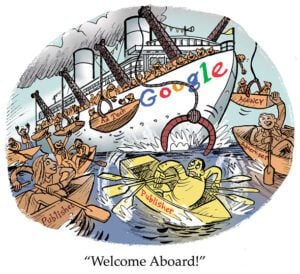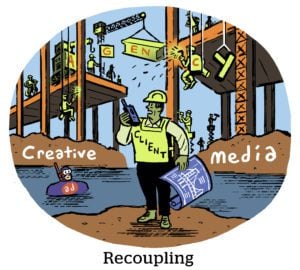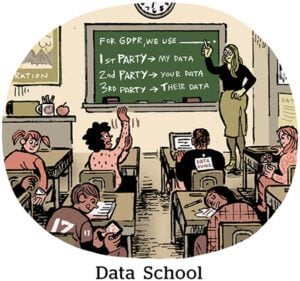Instead of squinting at reports, advertisers can now ask their data questions using generative AI.
On Tuesday, Viant announced AI updates to its existing data platform, including the rollout of its Chat with Data tool. The tool delivers data reports and analysis directly to marketers, nixing the need for business intelligence analysts, data scientists or SQL knowledge.
Chat with Data sits on top of the Viant Data Platform, which contains a combination of Viant’s proprietary data and “consented advertiser data” joined together via clean rooms. The data spans marketing campaign data, measurement data and first-party data from both advertisers and publishers.
As with many AI tools, it’s the slurry of data being pulled together that makes the difference. Because Viant’s Chat with Data tool draws from the wide range of data housed in the Viant Data Platform, it has the potential to make the answers to those marketer questions faster and more satisfying.
If marketers had all the time in the world, they would do in-depth analyses of where they’re spending their money, what media performs on an individual level and validate their hunch that “you need to buy this site because it’s always been part of your media plan,” said Viant Chief Product Officer Dustin Kwan.
But even marketers at large companies are pressed for time – and small and midmarket brands and indie agencies don’t have data teams they can turn to for help. Viant developed the tool to simplify the process for advertisers who want to analyze and activate against their data.
Chatbot in action
To make the tool easy for advertisers to use, Viant built a text-based interface, similar to ChatGPT, that allows them to communicate directly in natural language with the tool. Viant uses several available commercial and open-source LLMs as the underlying generative AI framework to power Chat with Data, though it declined to disclose which models it uses.
But it’s a two-way conversation, according to Kwan. The tool might ask advertisers if they’d like to see insights on customers, build advanced reporting functionality or perform segment analysis, for example.
Say an advertiser like Target is interested in selling Stanley Cups. The retailer could prompt Chat with Data with: “My customer segment is underperforming. Why?” The chatbot will then return detailed data reports and analysis with summarized results.
With this analysis, the chatbot may find that the target customer has evolved. It might state, “You are seeing decreased performance targeting young adults and moms. We are seeing performance increase with the customer segment of dads,” along with relevant information, like a chart showing spend trends over time.
Then the advertiser can say, “Generate a comparative data analysis of the three top-performing audience segments in this area,” whether at the ZIP code, state or national level. Chat with Data will use the Viant Data Platform to build that segment and make it available for the advertiser to activate against directly in the Viant DSP.
Great expectations
One advertiser beta testing Chat with Data is ESB Advertising, an independent digital marketing agency.
Clients demand more from agencies than they used to, said Chad Kehoe, the agency’s digital director. They expect agencies to be able to answer straightforward questions, like: “What is my return on investment for this geography, for this media and for this campaign?”
People often have preconceived ideas of who their current audiences and target customers are or how they should be running their campaigns, Kwan said. AI technology is valuable because it can revalidate an advertiser’s choices on a daily or monthly basis.
“The question will become how much advertisers and agencies are willing to listen to the data versus continue to use their perceptions,” Kwan said, “even though the data is pointing them in a different direction.”





